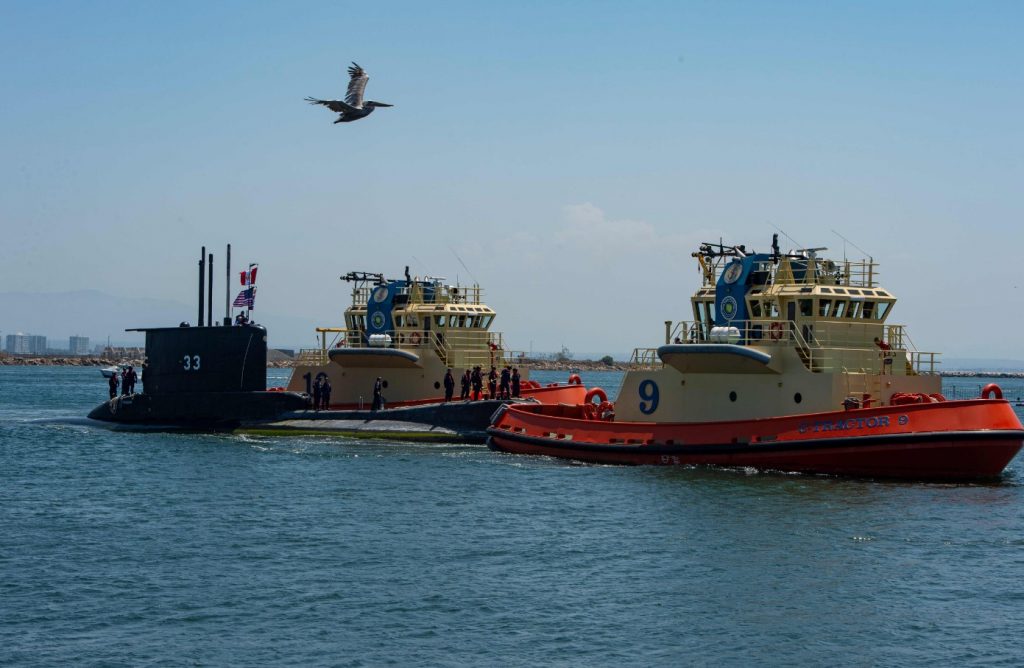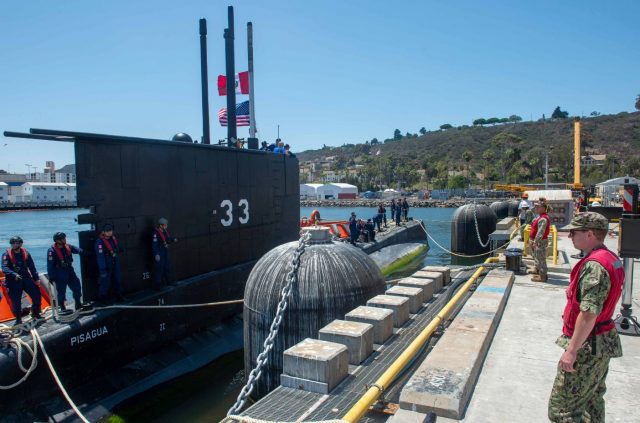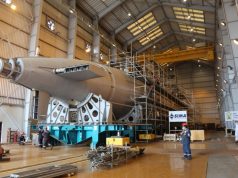Peruvian Navy submarine BAP Pisagua (SS-33) arrived at Naval Base Point Loma (NBPL) on August 19 for training activities as part of the Diesel-Electric Submarine Initiative (DESI) program.
The staff of Commander, Submarine Squadron 11 (CSS-11) partnered with the crew of the German-built Type 209 submarine (SSK) to enhance and conduct training.
Over the course of the next two months, Pisagua will participate in a multitude of different exercises, to include surface, air, and sub-surface anti-submarine warfare (ASW) exercises, a carrier strike group composite unit training exercise and a maritime patrol reconnaissance aircraft exercise.
“Each year, Submarine Squadron 11 looks forward to DESI and we are excited this year to be working with our Peruvian counterparts,” said Capt. Ken Douglas, commodore, CSS-11. “The United States’ alliances and partnerships are an enduring strength, and training with high-end diesel submarines, like Pisagua, gives us the opportunity to maintain our competitive edge necessary in the undersea domain. These engagements help strengthen the bonds between our nations.”
DESI, established in 2001 by US Fleet Forces Command, is an international program led by Commander, Submarine Force Atlantic, which works to enhance the navy’s capability to operate with diesel-electric submarines by collaborating with South American navies.
“Anytime you are afforded the opportunity to sharpen your warfighting skills with a close ally, you can’t help but be excited,” said Lt. Cecilia Cajandig, the CSS-11 liaison officer for Pisagua. “Our hope is that they learn as much from us, as we will learn from them.”

Sailors aboard Pisagua will also engage in training ashore at Naval Base Point Loma. The Submarine Training Facility San Diego will host the Peruvian sailors for classroom and practical training. This includes fighting simulated fires at the firefighting trainer and learning skills to combat flooding in the damage control team trainer.
“We are very confident that we will leave this exercise better equipped to accomplish our mission, because of the skills and tools we will have acquired from the experience,” said Cajandig. “I believe we both share the common goal of wanting to be the best, and to be the best, you have to train like you fight.”
Peru continues to provide invaluable support to this premier foreign submarine exercise program. During the past 19 years, Peruvian submarines have participated in a number of fleet exercises and tactical development events with the US Atlantic and Pacific Fleets. The Peruvian Navy operates a total fleet of six SSKs. Notably, Peru is the largest submarine force in South America and is the second oldest in the Western Hemisphere.
Pisagua is one of four Type 209/1200 submarines Peru received from former HDW (Howaldtswerke- Deutsche Werft GmbH) in the 1980s. They are currently undergoing an overhaul under which they will receive new command and control, and propulsion systems. Peru also operates two Type 209/1100 submarines, which were overhauled in 2008.
CSS-11 is based at Naval Base Point Loma and consists of four Los Angeles-class fast-attack submarines, the floating dry dock ARCO (ARDM 5) and Undersea Rescue Command (URC). The squadron staff is responsible for providing training, material and personnel readiness support for each of these units.



























